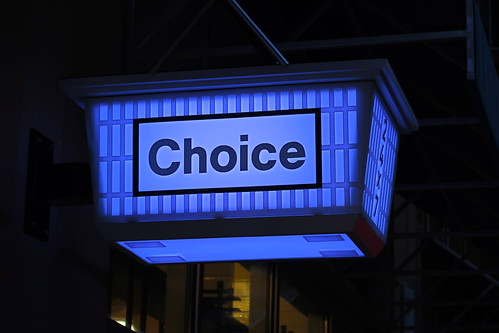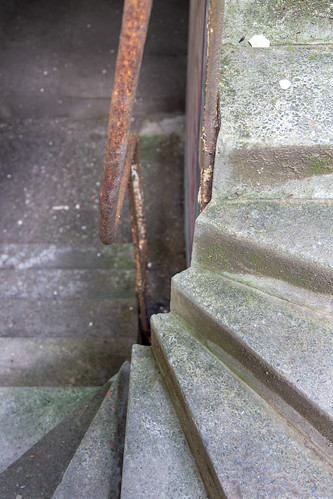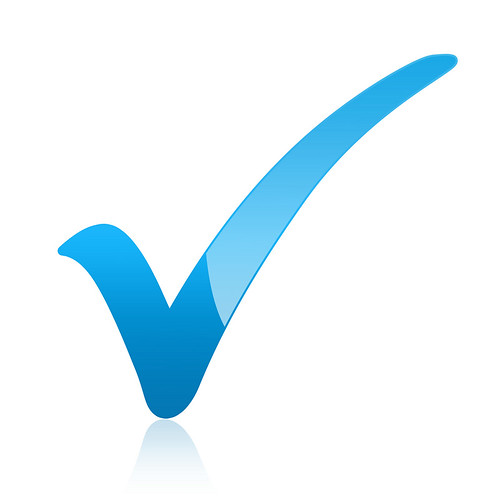A good student. I was a good student. I raised my hand when instructed, I handed my assignments in on time, I did anything the teacher asked of me. Did this work? Yeah sure, I got 90’s but why? Did I challenge the teacher? No. Did I look critically into what the teacher was saying? No. Did I dare to challenge what the teacher was teaching? No. I simply did well in high school merely because I just took the information the teacher told me, and portrayed that information through an assignment or a test. I never interpreted ideas, mostly because my ideas I knew, were not the ideas I would be assessed upon. I remember one instance where I did interpret a poem differently than the teacher. While my interpretation was correct, I got the answer on the test wrong. Why? Because the question was multiple choice and I had to choose either the answer which I gathered to be the correct answer or the answer which the teacher gathered to be the correct answer. I chose the answer I thought was right, based on how I interpreted the poem and was marked incorrect simply because it did not align with what my teacher decided the answer to be. I know right now this story may not make sense but keep reading to find out where I’m going with this!

This week in ECS 210, we were required to read Kumashiro’s Chapter 2 “Preparing Teachers for Crisis: What It Means to Be a Student?” in the book, Against Common Sense. This article addresses what it means to be a “good” student according to commonsense. While the answer is not explicitly implied, it was implicitly stated. A good student is a student who answers questions with the answers the teacher wants to hear and does not question the teacher. These students are the one who fulfills teachers’ expectations and complies with rules and norms whether they are implicitly or explicitly stated. If we think about a “bad student” we often think of the student who talks without raising their hand and always questions the teacher. Or the student who is disruptive since they are not sitting at their desk. Kumashiro says “mainstream society often places value on certain kinds of behaviours, knowledge, and skills, and schools would disadvantage students by not teaching what often matters in schools and society,” (22) meaning society has determined what a good student is. This brings me to talk about the hidden curriculum. I wrote my first assignment on it and the notion of a good student reminds me so very much of the hidden curriculum. I have learnt the hidden curriculum to be the one where the dominant narratives of society are deemed important. An example is raising your hand. In Western culture, it is appropriate to raise your hand to answer a question while in other cultures, just saying your answer or your thoughts/questions can be said whenever. Is this correct? Should a student just be a memorization machine where they need to memorize answers the teacher expects of them? Or should we build students to be critical students? I believe we should build students to be critical students. I highly believe students are smarter than adults, they look at things with a new perspective and they are brilliant with their ideas. Students are more creative than adults, why? Because they are more fearless, especially younger students. Why? They have not gone through as many years as an adult of complying to what their superior says. If they want to believe a cloud looks like a unicorn, then let them. Don’t tell them it looks like a cloud.

Furthermore, the students who are privileged by this definition are simply those who simply listen and accept what the teacher says. This assimilates students into being very similar. Students are not taught to be able to think on their own, because if they do, there is a high probability that their answer will be wrong because it does not agree with the teacher’s answer. Students’ who are defined as a “good” student doesn’t mean that is good. These students are not being taught to show their creativity, look at topics with different perspectives, or speak their opinion. If students are able to do this, then they would be good students because they are building critical-thinking skills which will serve many beneficial purposes. Every student will be able to succeed if the definition of a good student alters.
Now I leave you with a question. Why were you a good student? Did you look at ideas through different perspectives or did you just memorize what the teacher said in order to pass a test?
Until next time…




